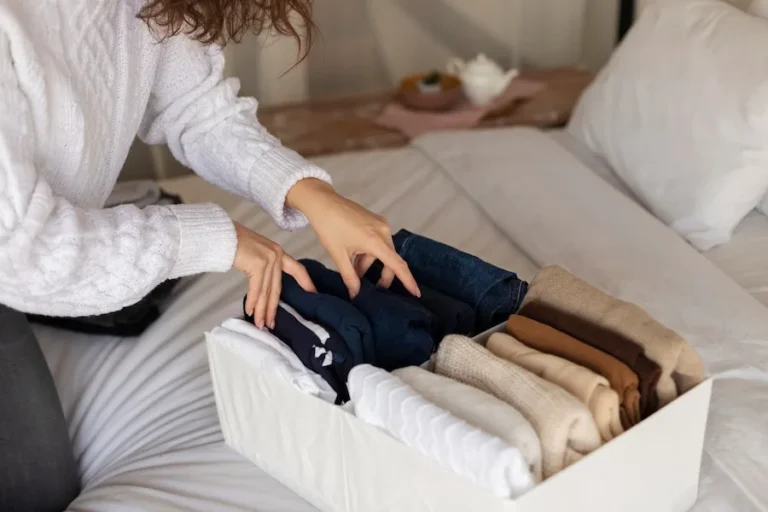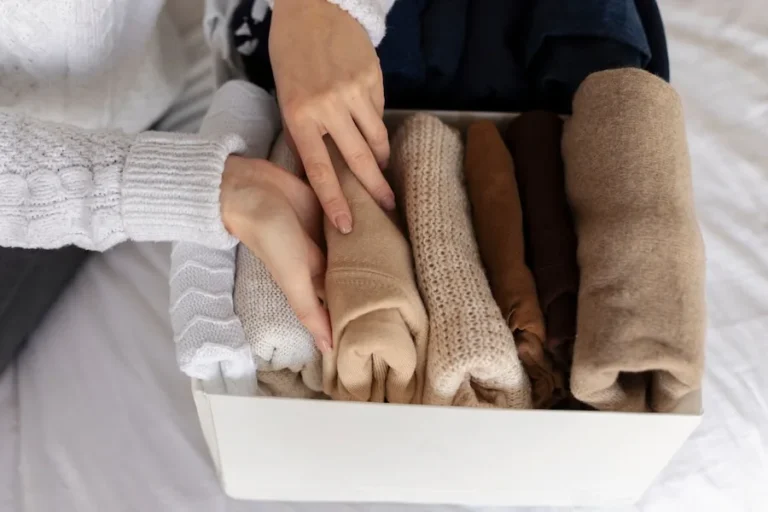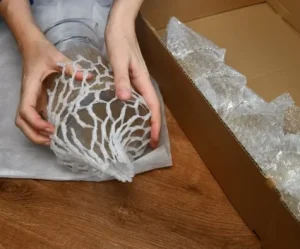How to roll clothes for packing is a simple yet effective method to save space and reduce wrinkles in your luggage. Unlike traditional folding techniques, rolling clothes for packing helps maximize every inch of your suitcase or backpack. This method works especially well for travelers using packing cubes, as rolled clothing stays compact and organized. Whether you’re using the Ranger Roll for shirts or rolling your jeans military-style, each folding technique helps keep your items neat and easy to access. Perfect for both short weekend trips and longer vacations, rolling clothes for packing ensures you fit more without overstuffing your bag. With a bit of practice, anyone can master this method and enjoy a more efficient, stress-free packing experience.
Why Rolling Clothes in a Suitcase Is a Great Travel Hack

Packing clothes by rolling is one of the smartest travel hacks to save space and stay organized. When you roll clothes for packing, you not only maximize luggage space but also reduce wrinkles and keep your items securely in place. This technique eliminates air pockets, making it easier to fit more into small bags, whether it’s a carry-on or a backpack. Unlike bulky folding techniques, packing clothes by rolling gives you a clear view of your belongings, helping you avoid overpacking and making unpacking quicker.
Another benefit of rolling clothes in a suitcase is easy access. Instead of digging through stacked, folded items, you can instantly spot each rolled piece. This method pairs perfectly with packing cubes, allowing you to sort clothing by type or outfit. Whether you’re a frequent flyer or an occasional traveler, choosing to roll clothes for packing is a time-saving, efficient solution that keeps your luggage neat, compact, and ready for the road.
What Is the Ranger Roll?
The Ranger Roll is a packing method first used by the military, especially the U.S. Army Rangers. It’s great for saving space by rolling clothes into small, tight bundles. It’s ideal for soft items like t-shirts, underwear, and lightweight pants. Learning how to Ranger Roll clothes is a must for any traveler looking to pack light and stay organized. This method also keeps clothes from shifting in your bag, which helps avoid wrinkles and mess.
One of the best parts of the Ranger Roll is how secure it keeps your clothes. Each roll holds together tightly, so there’s no need to worry about items coming undone during travel. It’s especially useful when packing a backpack or duffel bag, where things can easily move around. Once you get the hang of it, the Ranger Roll becomes a quick and reliable way to prepare your clothes for any kind of trip. It’s simple, efficient, and makes a big difference in how neat your suitcase stays.
For moving services in Sherman Oaks contact no other than Chamomile Go.
Step-by-Step: How to Roll Clothes for Packing

Rolling clothes for packing is a simple and effective folding technique that helps save space and reduce wrinkles in your luggage. Whether you’re packing for a weekend trip or a long vacation, this step-by-step guide will help you master the art of packing clothes by rolling.
1. Begin on a Level Surface
Start by laying your clothing flat on a clean, level surface like a bed, table, or even the floor. This step is crucial because it allows you to smooth out wrinkles before you start rolling. A flat surface makes it easier to apply a consistent folding technique that leads to a tight, clean roll.
2. Fold the Bottom Edge
Fold the bottom of the shirt, pants, or similar item up about 2 inches. This folded edge forms a small pocket, which is key for securing the roll at the end. It helps keep the roll from unraveling and adds to the neatness of your packing.
3. (Optional) Turn Clothing Inside Out
For delicate items or fabrics that wrinkle easily, turning clothes inside out before rolling adds a layer of protection. This technique shields the outer fabric from friction and pressure during travel, reducing the chance of visible creases.
4. Roll from the Top Down
Using a consistent folding technique, start rolling your clothing from the top downward. Apply firm pressure to create a tight roll. A compact roll not only takes up less room but also stays in place better during travel. This method is especially helpful when rolling clothes for packing in a suitcase or carry-on where space is limited.
5. Secure the Roll
Once rolled, either tuck the end of the clothing into the pocket formed in step 2 or use a small elastic band to keep everything in place. This ensures the roll doesn’t unravel during transit and keeps your suitcase tidy.
6. Pack Wisely
When placing rolled items in your bag, start by packing heavier or bulkier rolls (like jeans or jackets) at the bottom for better weight distribution. Lighter clothing such as t-shirts and underwear should go on top. Use packing cubes to group items, enhance compression, and keep everything easy to find.
By following this method of rolling clothes for packing, you’ll maximize your luggage space, minimize wrinkles, and keep your items organized. This folding technique works well for all types of travelers and is especially useful when space and efficiency are top priorities.
Why You Should Use Rolling Clothes for Packing
- Saves Space: Rolling gets rid of empty spaces so you can pack more.
- Reduces Wrinkles: Clothes stay smoother and ready to wear.
- Keeps Bags Organized: Everything is visible at a glance.
- Works with Packing Cubes: Perfect for neat and compact packing.
Learning how to ranger roll clothes and how to roll pants for packing will make your trip smoother and save you time while unpacking.
How to Roll Different Types of Clothing

Rolling clothes for packing is a space-saving and wrinkle-reducing method that works well for nearly every clothing type. Below is a breakdown of how to roll common garments using simple folding techniques to help you pack smarter and travel lighter.
T-Shirts and Tank Tops
Start by folding the sleeves inward to form a long rectangle. Then, roll the shirt tightly from the bottom hem up toward the neckline. This technique keeps shirts compact and helps reduce wrinkles, making them ready to wear straight out of your bag. It’s ideal for both suitcases and backpacks.
Pants and Jeans
To roll pants for packing, lay them flat and fold in half lengthwise so that one leg is stacked on the other. Smooth out any creases, then roll tightly from the waistband down to the cuffs. This method works well for jeans, leggings, and lightweight trousers. To secure the roll, either use a rubber band or tuck the loose end into itself.
Sweaters and Hoodies
Because these items are bulkier, begin by folding the sleeves across the body of the garment. Then roll upward from the bottom hem toward the collar. Rolling helps compress thicker items like sweaters and hoodies, making them easier to fit into your luggage—especially when traveling to colder climates.
Dresses and Skirts
Lay the dress or skirt flat and fold it lengthwise into halves or thirds depending on the width. Next, roll tightly from the top down. This rolling clothes for packing method helps maintain the shape of the garment and avoids deep crease marks, especially with delicate, flowy, or stretchable fabrics.
Underwear and Socks
Roll underwear into a tight tube to save space and keep things organized. For socks, stack them one on top of the other and roll them into a compact ball. These small items are perfect for filling gaps in your suitcase or stuffing into shoes for maximum space usage.
Winter Jackets and Coats
Lay the jacket flat, fold the sleeves inward, and roll from the bottom hem up toward the collar. Since winter outerwear is naturally bulky, this folding technique helps reduce its footprint. For extra compression, consider using packing straps or vacuum-seal bags to fit the jacket into tight spaces, such as carry-ons or side compartments.
By using these clothing-specific rolling techniques, you’ll make the most of your luggage space, keep items more organized, and arrive with garments that are ready to wear. Whether you’re preparing for warm beaches or chilly mountain trips, packing clothes by rolling is a smart, efficient choice for every traveler.
Folding vs. Rolling | What’s Better for Packing?
Rolling Clothes:
Rolling is ideal for soft, lightweight garments such as t-shirts, underwear, leggings, and pajamas. This method is a space-saver, making it especially useful for carry-ons or backpacks. Rolled clothes also tend to wrinkle less because there are no hard creases, and it’s easier to see everything in your bag at a glance. For travelers looking to maximize every inch of space, rolling is often the go-to method.
Folding Clothes:
Folding works best for thicker items or more structured, formal clothing like dress shirts, trousers, sweaters, and blazers. It helps garments maintain their shape and minimizes the formation of deep wrinkles. Folding is also beneficial when packing in a traditional suitcase with designated compartments or when using packing cubes.
Best Tip:
Use both techniques! Roll your soft, casual items to save space and increase visibility. Fold bulkier or wrinkle-prone garments to keep them neat and crisp. Combining both methods allows you to pack more efficiently while keeping your clothes in good condition throughout your trip.
Final Tips for Rolling Clothes in a Suitcase
- Use packing cubes to separate rolled and folded clothes.
- Put rolled items in first, especially on short trips.
- Practice how to ranger roll clothes for extra space-saving power.
- For business trips or formal wear, fold those items and roll the rest.
Conclusion
Effective packing depends on your ability to roll your clothes for packing, which helps optimize luggage capacity and maintain wrinkle-free garments. This method ensures your clothes stay neat and allows you to make the most of limited space—whether you’re preparing for a quick weekend getaway or a longer trip. By combining rolling and folding techniques, you can tailor your packing style to suit different fabrics and clothing types. This flexible approach not only maximizes space but also preserves the condition of your wardrobe. With a little practice, you’ll be able to pack like a pro—keeping everything tidy, accessible, and efficiently arranged. Any visitor should use this basic yet quite efficient packing method, and with Chamomile Go, you’ll have the perfect solution to streamline your packing experience.
FAQs
What Is The Best Way To Roll Clothes For Packing?
Lay garments flat, fold the sleeves in, and tightly roll from one end to the other. This approach makes the most of available space and maintains the neatness of your belongings.
How Do You Roll Clothes For Packing To Prevent Wrinkles?
Before rolling, smooth out clothing to reduce creases; roll lightly without over-tightening. When rolling your clothes, think about adding a packing cube or tissue paper for extra security.
What Is The Best Folding Method For Packing?
The “bundle” approach where garments is stacked and folded into a small bundle to minimize creases and maximize packing space—is the most efficient folding method.
What Is The Best Way To Pack Clothes For Travel?
The best packing method combines folding to preserve structure and rolling for space economy. Pack cubes or bags for extra organization and wrinkle avoidance.




